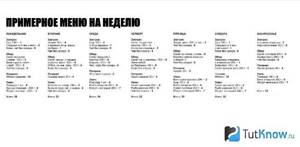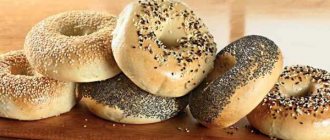Intermittent fasting, or intermittent fasting (another name is fasting) is at the peak of popularity today. Doctor, biophysicist, specialist in Tibetan medicine Yulia Yusipova made a detailed review of the methods and effects of PG, based on scientific data, and clearly explained how such fasting is practiced, “how it works” and what are the features of fasting in women.
Where to start the New Year?
Of course, intermittent fasting is a super popular and very cheap suggestion that many have already incorporated into their routine.
What is intermittent fasting (IF) - there are now many types of it:
- All-day fasting: alternate days without food with days of eating normally.
- Diet 5: 2. During the week, we choose 2 non-consecutive days and fast, on the remaining days we eat as usual.
- FMD - Fasting Mimicking Diet: This is a short-term 3-5 day plant-based diet in which calories are reduced by approximately 60 percent for all days. The diet was developed by Walter Longo, director of the Southern California Institute on Aging. https://yusipova.com/2018/01/13/fasting-mimicking-diet-fmd/
- Time-restricted eating: You eat only during a certain period of time - say, from 10 am to 6 pm. This can be done several days a week or every day. This is perhaps the most popular method of intermittent fasting, perhaps because you sleep soundly during almost the entire fasting period.
ONLINE COURSE ORGANIC WOMAN
You will receive even more knowledge about the benefits of fasting and its correct use in the Organic Woman online course.
More about the course
And now about the effects of Intermittent Fasting:
Digestion:
Migrating motor complex
The total transit time of food in the body is on average 53 hours. To remove waste, the digestive system activates the migratory motor complex (MMC), which propels food toward the exit. MMC is active between meals, but turns off when we eat. On average, MMK activation requires 1.5 to 2 hours of fasting, sometimes more. Longer food breaks give MMK more time to do his job.⠀
A fasting mimicking diet also has the potential to promote gut healing. In animal studies, it helped reverse signs of inflammatory bowel disease, stimulated intestinal tissue regeneration, and promoted the growth of beneficial gut bacteria. Researchers have observed the effects of a fasting-mimicking diet in humans. They found that participants with above-normal levels of inflammation at the start of the fasting cycle had reduced inflammatory markers at the end of the diet.
Weight loss:
First, by lowering insulin levels, fat burning improves.
Insulin is the main hormone for the accumulation of adipose tissue. When we eat, insulin rises and we store fat or glycogen in the liver. When insulin decreases, we begin to break down glycogen and burn fat.
Second, fasting causes cells to produce new mitochondria—and the more mitochondria you have, the more fuel you burn. There is a direct connection between mitochondria and metabolism. Your mitochondria take carbohydrates and other nutrients and burn them for energy.
Type 2 diabetes:
Type 2 diabetes and other metabolic conditions such as prediabetes and insulin resistance are characterized by blood sugar imbalances and chronically high insulin levels.
In a paper by Fung published in 2021 in BMJ Case Reports, three adult patients with type 2 diabetes used therapeutic intermittent fasting to reverse insulin resistance and control blood sugar. All three were able to stop taking insulin for diabetes. PMID: 30301822
A 2021 study published in the journal Cell Metabolism found that time-restricted eating improves insulin sensitivity, blood pressure, and reduces oxidative stress. PMID: 29754952
Cardiovascular Health
Numerous studies support the link between intermittent fasting and lower levels of LDL (so-called bad cholesterol), as well as weight loss. These are perhaps two important factors that play a role in the health of the cardiovascular system.
Intermittent fasting has a positive effect on reducing inflammation, which makes a significant contribution to heart health. Atherosclerosis, a chronic inflammatory condition in which plaque builds up in the arteries, is the leading cause of vascular disease worldwide.
Cardiovascular disease occurs in the presence of inflammation and oxidative stress, which cause changes in cholesterol and arterial lining. We know that high insulin levels and high blood sugar are closely related to this inflammatory process, and that intermittent fasting reduces insulin levels.
Cognitive health
Intermittent fasting can regulate blood sugar levels and lower insulin levels. This is one of the key mechanisms of protection against neurodegenerative diseases.
Intermittent fasting helps control sugar levels and thereby prevents aging and related diseases. At its core, PG is a lifestyle choice that can have long-term benefits for our brain health.
Evidence suggests that PG stimulates a process called autophagy, in which the body cleans itself and discards dysfunctional cellular components.
Autophagy becomes less efficient with age. Its deficiency is associated with inflammatory conditions, including neurodegenerative diseases. When “toxins” (beta amyloid) accumulate inside our cells, the disease can begin to progress.
Autophagy eliminates the accumulation of toxic substances, allows the cell to rejuvenate and get rid of excess, including spent organelles. It's worth noting that other forms of mild stress, such as exercise, also promote autophagy.
PG also increases the production of brain-derived neurotrophic factor (BDNF), which prevents cognitive degeneration.
Intermittent fasting benefits include feelings of increased energy and concentration
Oncology
Oncology is essentially uncontrolled cell growth. Autophagy, which occurs in PG, helps sort and remove cellular waste. At the same time, dysregulation of autophagy is associated with many degenerative diseases, including oncology.
Animal studies, for example, suggest that PG may inhibit the progression of a number of cancers, as well as protect healthy cells during chemotherapy. Periods without food help build resilience in the immune system, which will help combat the immunosuppression that often follows chemotherapy.
Stable blood sugar levels protect against cancer. A 2021 study of more than 2,000 breast cancer patients found that those who fasted for 13 hours or more overnight had significantly lower levels of glycated hemoglobin (a measure of blood sugar levels), reducing risk recurrence and mortality from breast cancer, and the risk of all-cause mortality was reduced. PMID: 27032109
However, the relationship between autophagy and cancer is complex and may depend on tumor type, disease stage, and genetics. I do not recommend intermittent fasting without consulting your healthcare provider.
Contraindications for intermittent fasting.
- Pregnant or breastfeeding women. Pregnancy is a period of growth and development, so any restriction in the supply of nutrients to the mother's body may not be desirable.
- Children. Fasting is not suitable for a growing body.
- For those with a history of eating disorders (bulimia and anorexia).
- People who are underweight. Most people lose weight during PG, so if you're low, don't starve yourself. If you have a body mass index (BMI) less than 20, fasting is contraindicated.
- People suffering from heart problems or high blood pressure. PG may have a beneficial role in heart disease, but consultation with your healthcare provider is important. The fact is that during fasting, an imbalance of electrolytes can occur, which can cause side effects. And proper prevention of such an imbalance will avoid side effects.
- For those with adrenal problems or blood sugar imbalances. PG can cause cortisol spikes, which can worsen adrenal and blood sugar problems. It's best to start with a 12 hour fast that includes overnight and then slowly adapt your metabolism. If you have sudden jumps in glucose and you easily enter a state of hypoglycemia, then fasting without medical supervision is contraindicated for you.
Kinds
Depending on duration:
- long-term (long-term/multi-day/permanent) - if you live on a 16/8 fasting regime for more than a month;
- alternating (periodic/medium duration) - if you alternate days with a 16/8 diet with a regular one;
- short-term (short-term/one-day) - if you adhere to this scheme from 1 day to 1 week.
Experts advise making daily 16-hour fasting (as the most beneficial of all) your usual lifestyle.
Depending on the purpose:
- medicinal;
- for building muscle mass;
- for weight loss;
- preventive.
You can try a short-term 16-hour fast just for the sake of curiosity, to draw conclusions for yourself: how much weight you lost and for how long, how it affected your figure, how your well-being has changed. After this, you can more definitely decide whether it is worth trying this technique on yourself.
Duration of fasting
Level 1
Start with a 12-14 hour daily fasting period. For example, finish dinner at 7 pm and don't eat until 7 - 9 am the next day.
Level 2
Extend your fasting window to 16-18 hours and eat two meals a day within 8-6 hours.
Level 3
Extend your fasting window to 20 - 22 hours and eat once a day for 2 - 4 hours.
It is not recommended to rush, increasing the hunger window and reducing the eating window. It is better to achieve stabilization of the condition at the initial level, this will allow you to obtain lasting positive effects.
Women may tolerate daily PG less well; they should fast with extreme caution, and preferably start with 1-2 day fasts, no more than 12-16 hours of fasting per week.
What it is

The entire 16/8 system of Martin Berhan is revealed in these two numbers: you need to endure 16 hours of fasting (you are allowed to drink water), after which you can eat for 8 hours (this period is called the eating window).
On the one hand, the body receives all the necessary substances to produce energy and maintain the normal functioning of internal organs. Even if for a short period of time. On the other hand, after 12 hours, when the cycle of abstinence from food begins, it starts vital processes: it speeds up metabolism, removes waste and excess water, begins to break down fats, and most importantly, activates autophagy.
In 2021, the 16/8 method gained a scientific basis when the Nobel Prize was awarded to a Japanese scientist who described in detail the process of autophagy. It turns out that it is short-term fasting that triggers it, 12 hours after the last meal. If you take the 12/12 scheme, it will not be so effective, since the cells will only begin to utilize all excess, and here you are with your breakfast. Therefore, the 16/8 interval is the ideal practical experience that fits into the discovery of Yoshinori Ohsumi.
Additional scientific research is currently being conducted on various intermittent fasting schemes, including 16/8. The largest one was completed not long ago in the USA. According to the published results, this particular technique did not entail any negative effects on the body and turned out to be extremely useful in all respects.
However, these data have been severely criticized. Firstly, the experiments were carried out on rats, and their body is still different from the human body. Secondly, when practicing 16 to 8 fasting, people often note side effects and deterioration in well-being, about which not a word is said in the reports of the American Scientific Society.
16/8 fasting has many names:
- intermittent: if they were hungry, they broke for food;
- interval: includes 2 intervals - abstaining from food and eating it as usual;
- cyclical: some people prefer to call these intervals cycles;
- cascade: some people call intervals cascades.
Despite such diversity, all these terms reflect the essence of fasting - carried out in cycles of several hours.
Liquid low-calorie fasting
During a non-caloric fast, only drinks such as water, black coffee and tea are consumed. Some people stick to water only during this type of fast, but it is not yet clear whether water fasting provides more benefits. Drinking polyphenol-rich drinks like coffee or tea while fasting can actually enhance some of the benefits of fasting, not to mention making it psychologically easier for most of us.
Duration
You can practice from 24 hours to several days. As a rule, the longer you fast, the deeper the cleansing of the body. However, strict fasting should only be recommended for healthy people under medical supervision. Be sure to consult your doctor before starting a fast!
The mechanism of fasting
Autophagy is activated during a 12-16 hour break in nutrition and decreases when caloric intake begins. Longer, zero-calorie fasts increase the autophagy process and give your cells more time to regenerate and optimize their function.
It is important to know!
This type of fasting can lead to electrolyte imbalances, especially if you fast for a long time or if you sweat at the same time. Combine fasting with drinking water enriched with sea salt - 1-2 teaspoons per liter of water. You can also add extra electrolytes or micronutrients, but without added calories or sugar.
How to deal with psychological hunger?

Use a flexible diet technique

Most dietary nutrition programs are based on limiting or eliminating certain foods, such as sweets or baked goods. However, people tend to want what is forbidden. This is a fairly serious psychological problem for a large number of people. To avoid this, allow yourself to consume about 10 percent of the “forbidden” dishes or foods.
Play sports

Under the influence of physical activity, leptin production accelerates, which reduces appetite. However, on the other hand, it is possible to reduce the concentration of glucose, which has a stimulating effect on the feeling of hunger. It’s safe to say that training eliminates a large number of psychological factors and goes well with diet. In this part of Pavel Naumenko’s fitness blog, you will learn how to cope with hunger while cutting:
Features of fasting in women.
If you decide to go through a fasting cycle, here are some tips for women to prevent possible hormonal problems during fasting:
- Avoid intense exercise such as CrossFit and long-distance running while fasting. Instead, choose low-repetition strength training, low-intensity cardio, or swimming and yoga.
- Sleep MUST be a priority. The influence of sleep on hormones is profound, and poor sleep quality can imbalance hormonal status.
- Eat enough calories during your eating window, including healthy fats.
- Minimize stress while fasting.
- It is best for women to stick to short periods of fasting and gentle methods.
Approximate diagram
The 16/8 scheme is implemented taking into account factors such as work schedule, time of awakening and sleep, and training plan. A plan from Martin Berhan can help when creating a schedule:
- 8.00 - glass of water, 1 tsp. amino acids (for those who play sports);
- 9.00 - green, black tea or coffee;
- 11.00 - green, black tea or coffee;
- 12.00 - 1 tsp. amino acids;
- 12.00-13.00 - physical activity, sports;
- 13.00 - breakfast, the caloric content of which should be 40-50% of the daily caloric intake;
- 17.00 - lunch, its calorie content is 25-35% of the total;
- 20.40 - protein dinner, the remaining 25% of daily calories;
- 21.00-13.00 - abstain from food.
You can take absolutely any time interval for yourself. The main thing is that the eating window is 8 hours, and the fasting itself lasts 16.
Menu for the week
It can be quite difficult for beginners to create the right menu the first time, since too many criteria need to be met: breakfast is the most high-calorie, fats + carbohydrates; lunch should include all nutrients (proteins, fats and carbohydrates) and be less caloric; dinner - light, exclusively protein.
An approximate menu for the week will help you competently create your diet that meets all the principles of intermittent fasting.

A fasting system with a 16 by 8 pattern can always be adjusted to suit you. You can choose your own time for the food window or organize 4 meals instead of 3 (this will allow you to eat fruits and nuts during a snack), etc. Try, experiment, the main thing is not to harm your health.
Recommendations

Preparation
Before practicing the 16/8 system, it is recommended:
- be examined in the hospital to identify contraindications;
- consult with doctors;
- gradually increase the amount of water you drink per day, reaching the recommended level of 2 liters;
- step by step switch to proper nutrition;
- calculate the daily calorie content of your diet, which will ensure weight loss.
Nutrition
- You need to consume your daily calorie intake in 8 hours.
- Breakfast should be the highest in calories and contain mainly complex carbohydrates and healthy animal fats.
- It is advisable to make the remaining meals protein, although fats and carbohydrates are also allowed at lunch.
- Meals should be divided (at least 3 meals). You can't overeat.
- The acceptable daily water intake is 2 liters.
Sport
Those who play sports need to organize training 1-2 hours before the eating window, on an empty stomach. At the same time, it is advisable to consume 10 g of BCAA amino acids during exercise. These are Martin Berhan's recommendations for men who are looking to build muscle mass.
This advice can also work for women, but only if they also care about the muscle mass of their body and are actively involved in sports. But, if they have lighter workouts (fitness, dancing, yoga), sports nutrition can be replaced by protein shakes, which are easy to prepare at home. However, you will have to drink them after classes, since they are high in calories and can only be consumed within the food window.
Within one workout, it is necessary to combine both cardio and strength training, otherwise the muscle fibers will be broken down within a 16-hour interval, which will negatively affect the figure.
Exit
There is no separate tactic for exiting the 16/8 system. Recommendations for its organization are universal:
- do not overeat;
- include prohibited foods in the menu 1-2 per day;
- increase daily caloric intake gradually;
- Do not quit sports too abruptly.
This will avoid side effects and discomfort when switching to a regular diet.











